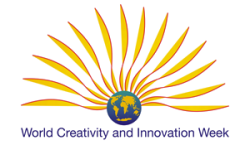Stanford’s Crash Course on Creativity – Week 2 – Paying Attention
The theme for Week 2 is Paying Attention. Acute observation is a key skill for gaining valuable knowledge about the world around you, and it fuels your imagination. Fact-finding or Data-Finding is the second step of the Creative Problem Solving Process as taught at the International Center for Studies in Creativity in Buffalo, my alma mater, so, I’m pleased to see this course focus on this one aspect from the very beginning.
Focused observation and commitment to really seeing what’s happening is an important key to innovation, says Tina Seelig, Executive Director of Stanford’s Technology Ventures Program in her video lecturette. The knowledge you gain from paying attention provides opportunities for problems to be solved as well as insights into solutions, she adds. I totally agree.
As a good proponent of venture (defined by the online dictionary as 1. An undertaking that is dangerous, daring, or of uncertain outcome. 2. A business enterprise involving some risk in expectation of gain, and 3. Something, such as money or cargo, at hazard in a risky enterprise) Seelig taps into IDEO’s leadership in user experience or UX to fuel their innovation and design projects and mentions how they redesigned the blood donor appeal and experience for the American Red Cross.
The video references for this week’s lesson – you may find them refreshing…
Finding Opportunity in the Rain David Friedberg (2:31)
Think Line a Traveler Tom Kelley, IDEO (4:40)
Field Observations with Fresh Eyes Tom Kelley (2:48)
The homework.
1) Go to at least 6 different stores. They can be at the same shopping center or different locations. Spend at least 15 minutes in each store making OBSERVATIONS using the lab guide for reference. Take photos to capture your observations.
2) Create a presentation that captures your INSIGHTS and HIDDEN OPPORTUNITIES. What types of things had you missed before? What were your biggest surprises? Are there opportunities hidden in plain sight?
Use your photos to highlight your insights. Your presentation can be in the form of slides or a short video.
Add the link to your presentation so that everyone can see it.
THE OBSERVATION GUIDE is 44 questions long and covers store entrance, environment, personnel, products, customers and more. These may work well for you if you want to begin looking with new eyes to see new challenges and opportunities.
I prefer a different kind of exercise, like the ones I lead with groups to bring them in touch with the richness of their surrounding environment and making meaning from their captured images and impressions. Her focus is consumer based, observing stores. Maybe with the social entrepreneurial thrust of the times she might next time include human situations – public transit, recreation activities, public space use, etc. In all fairness, I’ve a hunch that if Tina were taking my introductory program to creativity, she may harbour objections to my approach, such is the nature of our field.
Off to observe – I want to be engaged in the assignment so may do it on public transit in Toronto.
Marci Segal
And, here’s my homework response…for those of you interested


Stanford’s Crash Course on Creativity – Wee… http://t.co/DCbiDOti